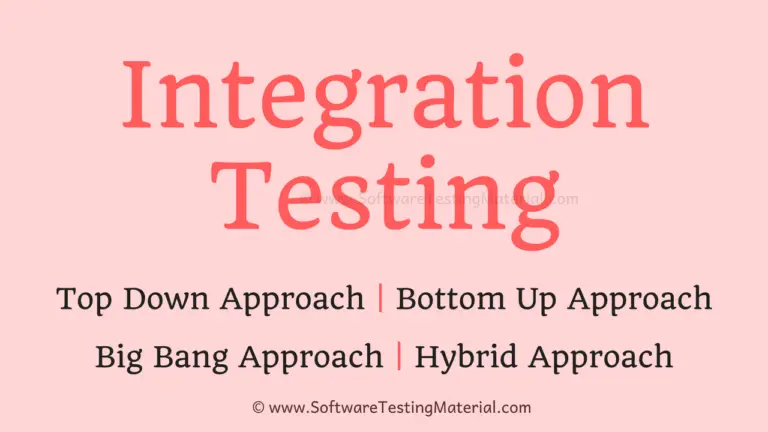Boundary Value Analysis Test Case Design Technique
Boundary Value Analysis Test case design technique is one of the testing techniques. You could find other testing techniques such as Equivalence Partitioning, Decision Table and State Transition Techniques by clicking on appropriate links.
Boundary value analysis (BVA) is based on testing the boundary values of valid and invalid partitions. The Behavior at the edge of each equivalence partition is more likely to be incorrect than the behavior within the partition, so boundaries are an area where testing is likely to yield defects.
Check below video to see “Boundary Value Analysis In Software Testing”
Every partition has its maximum and minimum values and these maximum and minimum values are the boundary values of a partition.
A boundary value for a valid partition is a valid boundary value. Similarly a boundary value for an invalid partition is an invalid boundary value.
Tests can be designed to cover both valid and invalid boundary values. When designing test cases, a test for each boundary value is chosen.
For each boundary, we test +/-1 in the least significant digit of either side of the boundary.
Boundary value analysis can be applied at all test levels.
Example on Boundary Value Analysis Test Case Design Technique:
Assume, we have to test a field which accepts Age 18 – 56
Minimum boundary value is 18
Maximum boundary value is 56
Valid Inputs: 18,19,55,56
Invalid Inputs: 17 and 57
Test case 1: Enter the value 17 (18-1) = Invalid
Test case 2: Enter the value 18 = Valid
Test case 3: Enter the value 19 (18+1) = Valid
Test case 4: Enter the value 55 (56-1) = Valid
Test case 5: Enter the value 56 = Valid
Test case 6: Enter the value 57 (56+1) =Invalid
Example 2:
Assume we have to test a text field (Name) which accepts the length between 6-12 characters.
Minimum boundary value is 6
Maximum boundary value is 12
Valid text length is 6, 7, 11, 12
Invalid text length is 5, 13
Test case 1: Text length of 5 (min-1) = Invalid
Test case 2: Text length of exactly 6 (min) = Valid
Test case 3: Text length of 7 (min+1) = Valid
Test case 4: Text length of 11 (max-1) = Valid
Test case 5: Text length of exactly 12 (max) = Valid
Test case 6: Text length of 13 (max+1) = Invalid










Very good for understanding …!!!. I am new insoftware testing. ..
Thanks Savitha. Keep visiting.
Wow, amazing material, very helpful and resourceful.One of the best I have studied so far.
Thanks.
I read test case design technique. All the example given for ECP, BVA , state transition and Decision table are Best and realistic. They are easy to understand. Thanks for these document
Thanks Shruti
Hi, Rajkumar I’m new in testing field . All the example given for ECP, BVA , state transition and Decision table are explained very well. They are easy to understand. Thanks for these document
Priya
Welcome Priya. If you have any questions, pls let us know.
Hi i have 9 yrs experience in manual testing i want to move into automation plz let me know which tool to choose among so msny tools into market
Hi Fauzia,
You can choose Selenium WebDriver. Its an open source free tool and most of the companies are preferring it. So there are many opportunities in the market. If you have any questions, please let me know.
Very nicely explained with example
Thanku